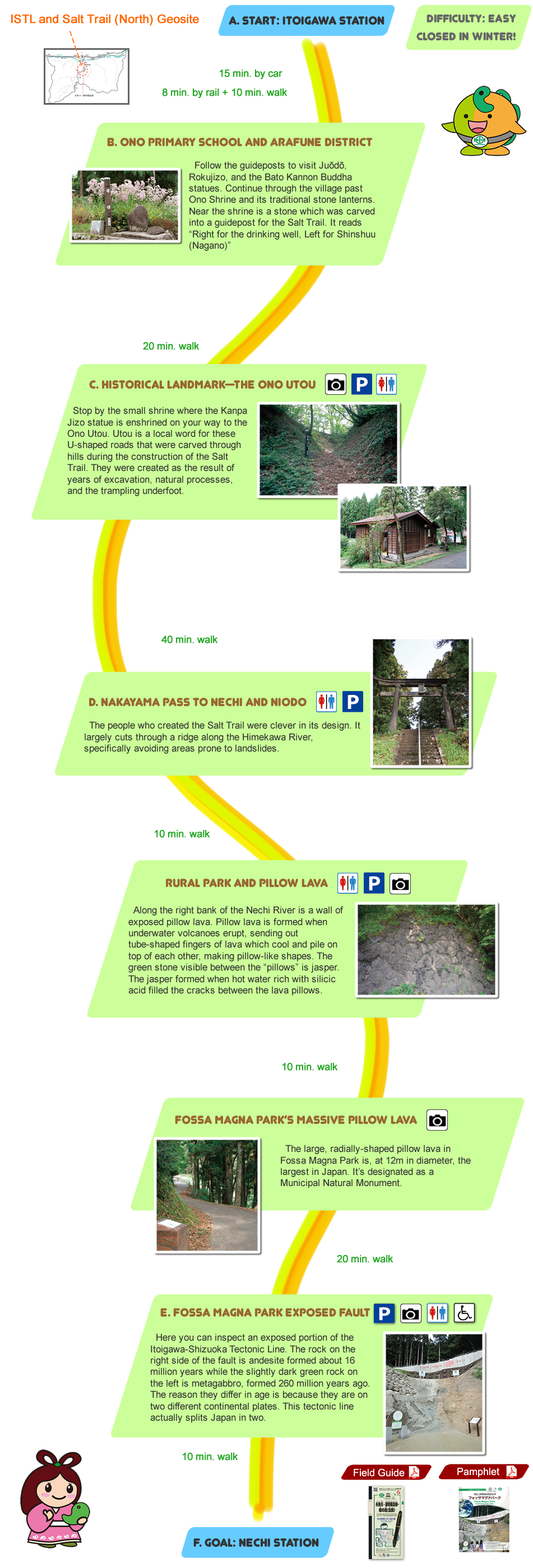Model Courses
- Number
- Area
- 1. Kotakigawa Jade Gorge
- 2. ISTL and
the Salt Trail (North) - 3. Downtown Itoigawa
- 4. Itoigawa Coast and
the Salt Trail (North) - 5. Umidani and Yakeyama
- 6. Benten-iwa
- 7. Hamatokuai
- 8. Shindosan and Gongendake
- 10. Tsugami Shindo
- 11. Amakazariyama
- Mini
- 1. Kotakigawa Jade
- 2. ISTL and
the Salt Trail (North) - 3. Downtown Itoigawa
- 4. Itoigawa Coast and
the Salt Trail (North) - 6. Benten-iwa
- 7. Hamatokuai
- Long Courses
- 5. Umidani and Yakeyama
- 8. Shindosan and Gongendake
- 10. Tsugami Shindo
- 11. Amakazariyama
Related Content
- Geosite
- Field Guide
Transporting salt and maritime produce, the Salt Trail was a lifeline for people of inland Japan.
- Geosite
- ISTL and Salt Trail (North)
- Time
- 5 hrs
- Access
- Walking,Car or Rail

